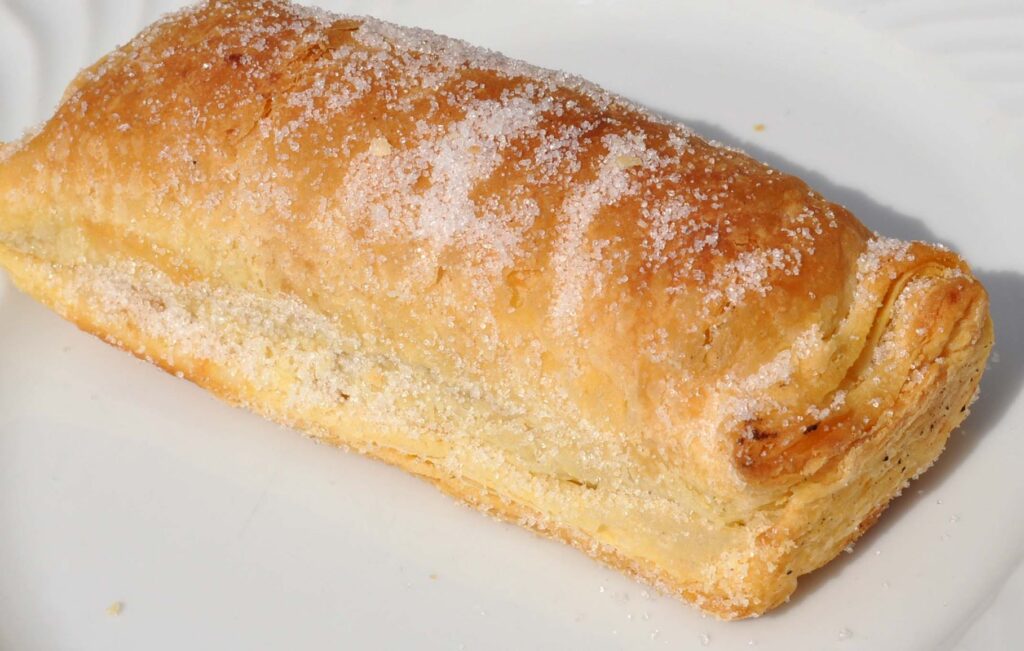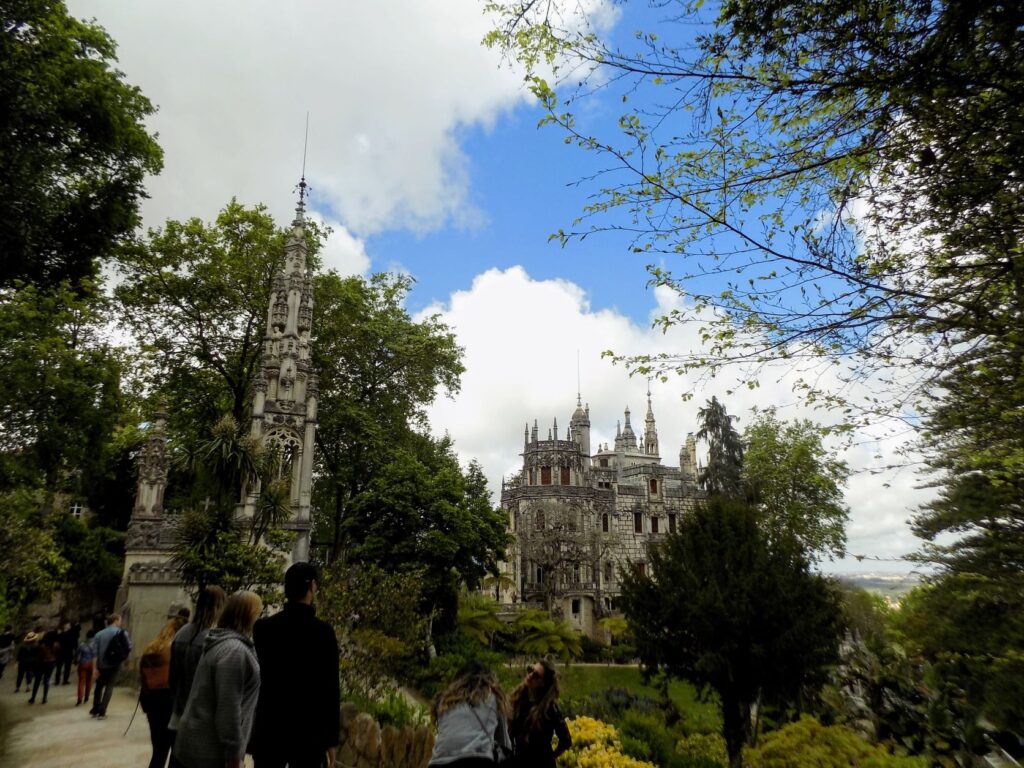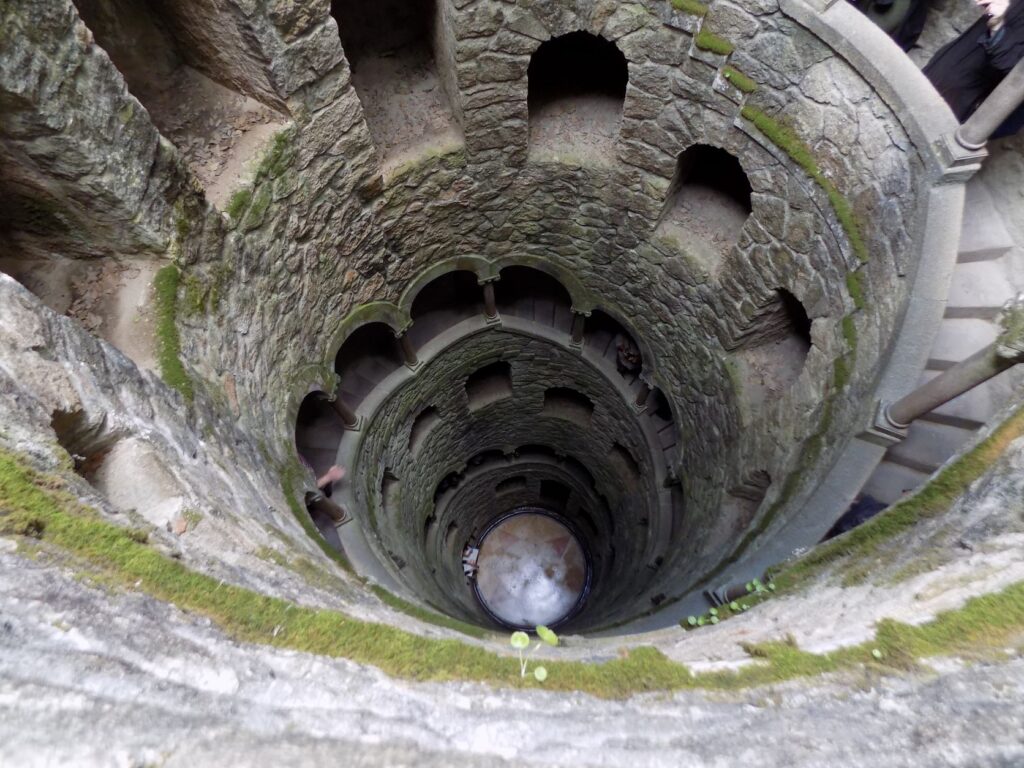After my time in Pena Palace, Armando took me into the heart of town for a little exploration and a bite to eat before my visit to Quinta da Regaleira. During this part of my day, I would succumb to temptation not once but twice and continue what, for me, amounts to an alcoholic drinking binge.
Casa Piriquita – Pillow cakes, port, and more
Founded in 1862 by Amaro dos Santos, Piriquita is, without question, the most famous bakery in Sintra. While staying at the Royal Palace in the summer, King Carlos I was one of the bakery’s habitués. Because Amaro’s wife Constância was a tiny woman, the king called her “Piriquita” and the family adopted it as the name of their bakery.
With a line snaking out the door, I followed Armando’s suggestion and walked up the hill and around the corner to Piriquita II. As it turned out, this shop is closed on Wednesdays so I traipsed back down the hill and discovered that the line was for the bakery but the small café had some open seats.
Although they offer some sandwiches I settled on having dessert for lunch ordering the Travesseiro da Sintra

(From saltofportugal.com)
or pillow cake for which the bakery gained its fame, a Pastel de Sintra (the bakery’s version of pastel de nata), and a glass of port wine. So delicious were the first two, that I allowed myself a second dip in the pool of temptation ordering a Noz Dourada (Golden Walnut), a Pastel de Cruz Alta, and a second glass of port.
But temptation wasn’t through with me yet. You see, as I wandered about the small town, I walked through a small shop that offered tastes of Ginjinha – the dark red Portuguese liqueur made from sour cherries. In Sintra and Obidos (at least) it’s served in tiny chocolate cups. In Lisbon, it’s served in shot glasses com ou sem (with or without the cherries). When it’s served in chocolate, you leave a small amount in the cup then pop it into your mouth for an explosion of sweet and sour. I didn’t know it at the time but not a day would by on the rest of this trip when I didn’t have alcohol in some form.
Next stop the Palace of Monteiro the Millionaire
The Palace of Monteiro the Millionaire is a somewhat mocking name bestowed by locals on the Quinta da Regaleira – one of the more fascinating of Sintra’s many palaces.

Until 1840 the estate was known as Quinta da Torre. Then, the Baroness da Regaleira, the daughter of a wealthy merchant from Porto purchased the property, turned it into a summer retreat, and renamed it Quinta da Regaleira. The Baroness appears to have run a bit short of funds and in 1890 António Augusto Carvalho Monteiro acquired the property at a public auction.
Monteiro, known by the nickname Monteiro Millions, was born in Brazil to wealthy Portuguese parents. Starting with plenty he built his inheritance into a greater fortune by selling coffee and gemstones before emigrating to Portugal.

(Monteiro from Wikimedia Commons Public Domain)
He was a bibliophile with a vast collection of books that included many by Luis Vas de Camões who is generally considered Portugal’s greatest poet. Inspired by the architecture of the estate’s existing palace and chapel and the decorative eclecticism of the Pena Palace looming above his property, Monteiro began a series of renovations filling the property with symbols drawn from Freemasonry, the Knights Templar, and Rosicrucianism. It’s also believed that symbols related to alchemy are hidden throughout and that all of this reflects his varied interests and ideologies and some of his eccentricities as well.
While the architecture of the estate evokes Roman, Gothic, and Renaissance styles, its principal influence is Neo-Manueline. It was designed by the Italian architect and set designer Luigi Manini and six years of construction began in 1904 to create the UNESCO Heritage site we visit today.
Perhaps the most enigmatic (and possibly most famous) feature of the property is the Initiation Well.

The first statement in the visitors’ brochure calling it a, “subterranean tower that sinks some 27 meters into the earth” is one of the few descriptions that we can accept as factual. The brochure’s characterization goes on, “Made accessible by a monumental spiral stairway, this hallowed space, full of esoteric and alchemical associations, makes the relation between Heaven and Earth intensely felt.” Perhaps some people are moved by the well but I had no metaphysical reaction of any intensity.
While myriad explanations such as this one from traveltomorrow.com,
The spiral staircase consists of nine levels separated by flights of 14 steps each, invoking references to Dante’s Divine Comedy (9 circles of Hell, Paradise and Purgatory) and the women’s fertile period usually starting at half of the 28 days lunar calendar.
and this one from the BBC
Templar initiations at Quinta da Regaleira began with candidates entering one of the Initiation Wells blindfolded. Holding a sword close to their heart, they would descend nine flights of stairs – a number that represents the nine founders of the Templar order.
Once reaching the bottom of the well, the candidate would walk into a dark labyrinth where they would symbolically and literally find their way up towards the light.
If they were able to make back through the well tower and into the sunlight, initiates would walk across stones in water to reach the chapel, where they would then be welcomed into the brotherhood.
are rife with speculation, the truth is neither Monteiro nor Manini ever provided any indication of the well’s purpose. Still, having this background before visiting the well could change one’s experience of it.
At land’s end
When I emerged from the Initiation Well and my other wanderings around the estate, Armando seemed ready to take me back to Cascais. On the way, however, we stopped at Cabo da Roca

the “Ponta mais ocidental do continente Europeu” or, for those who can’t decipher the Portuguese, the “westernmost point of continental Europe.”
If you look closely at the marker, you can also see this inscription,
“Aqui…
Onde a terrra se acaba
E o mar comenca”
This is from Canto III of the Portuguese epic poem Os Lusíadas written by the aforementioned Luis Vas de Camões and published in 1572. Often compared to Virgil’s Aeneid, Os Lusíadas is generally considered among the most important works of Portuguese literature. One translation would be, “Here… the land ends, And the sea begins”.
You can see some views from the Cape and other pictures from the afternoon here.
A pall descends
Armando and I parted at the hotel and I stopped in my room to freshen up before having a bit of a walk into a different section of Cascais than I’d explored Tuesday while also looking for a place to have dinner. Since it was late enough in my day that I should have received morning email, I decided to check for any news from home. It was at this point that I read the first message from my vet indicating Zicomo’s declining health. (Many of you have probably read the eulogy I published after having him euthanized just days after my return.) Concern for my companion cat would hang over the rest of the trip not only in Portugal but would continue when I joined the Earthbound Expeditions group in Vienna.
Thus, it should be unsurprising that I made no note of where I ate or even what I ate for dinner that night. And, though I stayed out well past sunset

hoping to push myself close to exhaustion, I still slept fitfully.